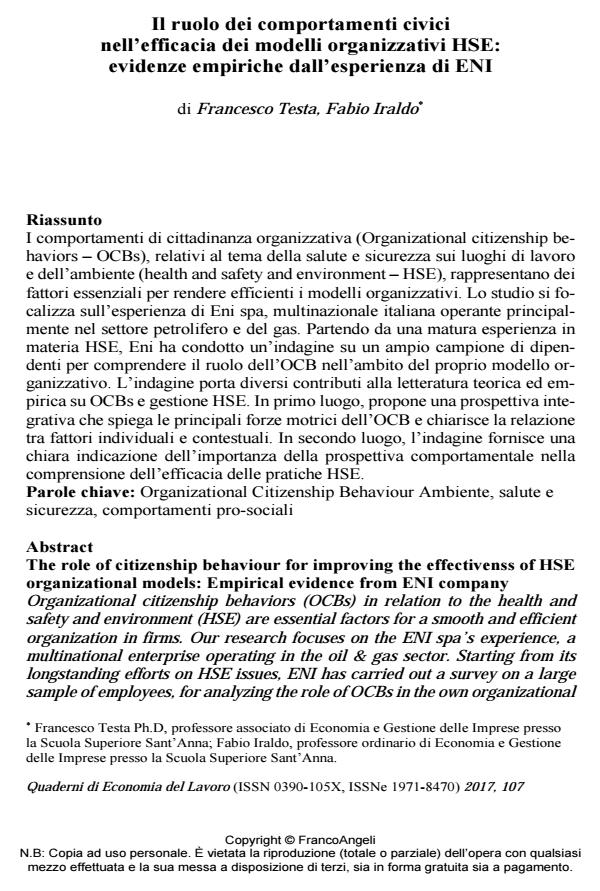Il ruolo dei comportamenti civici nell’efficacia dei modelli organizzativi HSE: evidenze empiriche dall’esperienza di ENI
Titolo Rivista QUADERNI DI ECONOMIA DEL LAVORO
Autori/Curatori Francesco Testa, Fabio Iraldo
Anno di pubblicazione 2018 Fascicolo 2017/107
Lingua Italiano Numero pagine 20 P. 125-144 Dimensione file 342 KB
DOI 10.3280/QUA2017-107004
Il DOI è il codice a barre della proprietà intellettuale: per saperne di più
clicca qui
Qui sotto puoi vedere in anteprima la prima pagina di questo articolo.
Se questo articolo ti interessa, lo puoi acquistare (e scaricare in formato pdf) seguendo le facili indicazioni per acquistare il download credit. Acquista Download Credits per scaricare questo Articolo in formato PDF

FrancoAngeli è membro della Publishers International Linking Association, Inc (PILA)associazione indipendente e non profit per facilitare (attraverso i servizi tecnologici implementati da CrossRef.org) l’accesso degli studiosi ai contenuti digitali nelle pubblicazioni professionali e scientifiche
I comportamenti di cittadinanza organizzativa (Organizational citizenship behaviors - OCBs), relativi al tema della salute e sicurezza sui luoghi di lavoro e dell’ambiente (health and safety and environment - HSE), rappresentano dei fattori essenziali per rendere efficienti i modelli organizzativi. Lo studio si focalizza sull’esperienza di Eni spa, multinazionale italiana operante principalmente nel settore petrolifero e del gas. Partendo da una matura esperienza in materia HSE, Eni ha condotto un’indagine su un ampio campione di dipendenti per comprendere il ruolo dell’OCB nell’ambito del proprio modello organizzativo. L’indagine porta diversi contributi alla letteratura teorica ed empirica su OCBs e gestione HSE. In primo luogo, propone una prospettiva integrativa che spiega le principali forze motrici dell’OCB e chiarisce la relazione tra fattori individuali e contestuali. In secondo luogo, l’indagine fornisce una chiara indicazione dell’importanza della prospettiva comportamentale nella comprensione dell’efficacia delle pratiche HSE.
Parole chiave:Organizational Citizenship Behaviour Ambiente, salute e sicurezza, comportamenti pro-sociali
Francesco Testa, Fabio Iraldo, Il ruolo dei comportamenti civici nell’efficacia dei modelli organizzativi HSE: evidenze empiriche dall’esperienza di ENI in "QUADERNI DI ECONOMIA DEL LAVORO" 107/2017, pp 125-144, DOI: 10.3280/QUA2017-107004